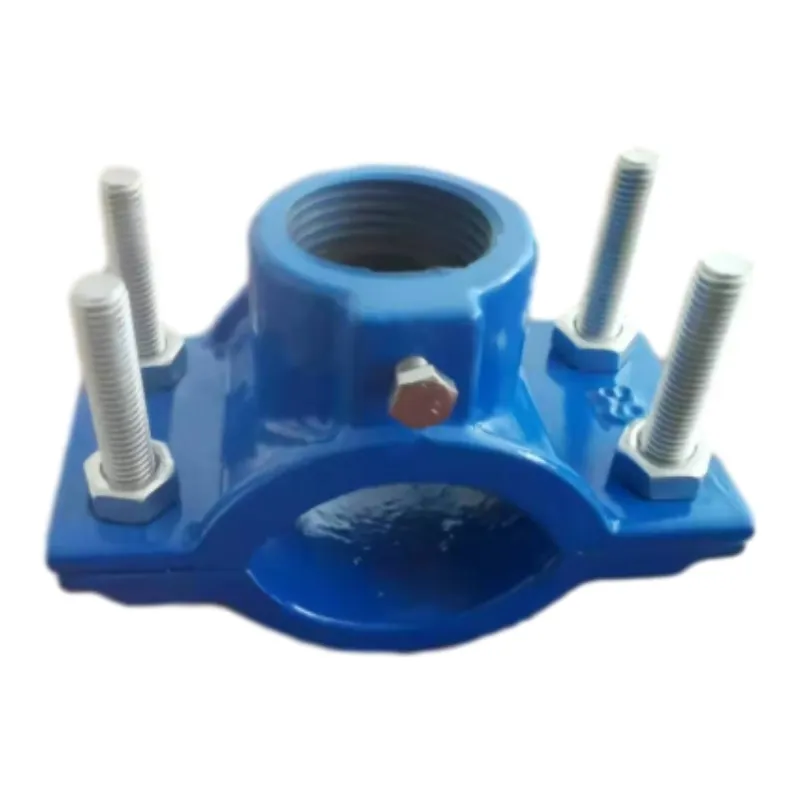casting manhole cover
The Importance of Casting Manhole Covers A Look into Design, Durability, and Safety
Manhole covers are ubiquitous elements in urban infrastructure that often go unnoticed. They serve a crucial function in maintaining the safety and integrity of our roads while providing access to underground utilities. Among the various methods of fabricating these essential pieces, casting has emerged as a predominant technique that guarantees durability, strength, and versatility.
1. The Casting Process
Casting involves pouring molten material, typically iron or steel, into molds to create a solid object once cooled. When it comes to manhole covers, this method is favored for its ability to produce complex shapes and designs while maintaining structural integrity. The casting process begins with creating a mold that captures the desired dimensions and features of the manhole cover. Once the mold is prepared, the molten metal is poured in and allowed to cool, solidifying into a robust cover that can withstand heavy loads and environmental stresses.
2. Materials Used in Casting
The choice of materials significantly impacts the performance of manhole covers. Ductile iron is one of the most commonly used materials due to its excellent strength-to-weight ratio and resistance to corrosion. This material can easily bear the load of vehicles while also enduring harsh weather conditions. Other materials include cast iron, which is traditional but heavier, and composite materials, which offer a lighter alternative while ensuring durability. The selection of material depends on the specific requirements, such as the anticipated load, environmental conditions, and aesthetic considerations.
casting manhole cover

Designing a manhole cover is not merely about functionality; aesthetics play a crucial role as well. While functional design ensures safety and accessibility, creative designs can enhance the visual appeal of urban environments. Many cities have introduced artistic manhole covers that reflect local culture and heritage, turning functional objects into decorative elements. This aspect of design promotes civic pride and engages residents in appreciating the less visible elements of urban infrastructure.
4. Safety and Accessibility Features
Safety is paramount when it comes to manhole covers. They must be designed to prevent accidents, especially in high-traffic areas. For instance, covers are typically fitted with features like anti-slip surfaces to prevent slips and falls, while also ensuring that they do not rise or shift when vehicles pass over them. Additionally, some covers incorporate reflective materials for increased visibility at night, reducing the risk of accidents. Accessibility is also a key consideration; covers need to be easily liftable for maintenance while secure enough to deter unauthorized access.
5. The Environmental Impact
As urban areas expand, so does the demand for manhole covers and other infrastructure elements. The casting process, particularly when using sustainable practices, can minimize environmental impacts. Many manufacturers are now implementing energy-efficient technologies and recycling scrap metal to reduce waste. Additionally, the longevity of cast manhole covers means that replacements are infrequent, which further diminishes their overall environmental footprint.
6. Conclusion
In conclusion, casting manhole covers is a critical aspect of urban infrastructure that balances functionality, safety, and aesthetics. As cities continue to grow, the importance of durable and reliable manhole covers will only increase. By utilizing advanced materials and innovative designs, we can ensure that these often-overlooked elements not only serve their essential purpose but also enhance the urban landscape. By recognizing the intricacies of manhole cover production, we can appreciate their substantial role in maintaining the safety and beauty of our cities.
-
The Smarter Choice for Pedestrian AreasNewsJun.30,2025
-
The Gold Standard in Round Drain CoversNewsJun.30,2025
-
The Gold Standard in Manhole Cover SystemsNewsJun.30,2025
-
Superior Drainage Solutions with Premium Gully GratesNewsJun.30,2025
-
Superior Drainage Solutions for Global InfrastructureNewsJun.30,2025
-
Square Manhole Solutions for Modern InfrastructureNewsJun.30,2025
-
Premium Manhole Covers for Modern InfrastructureNewsJun.30,2025
